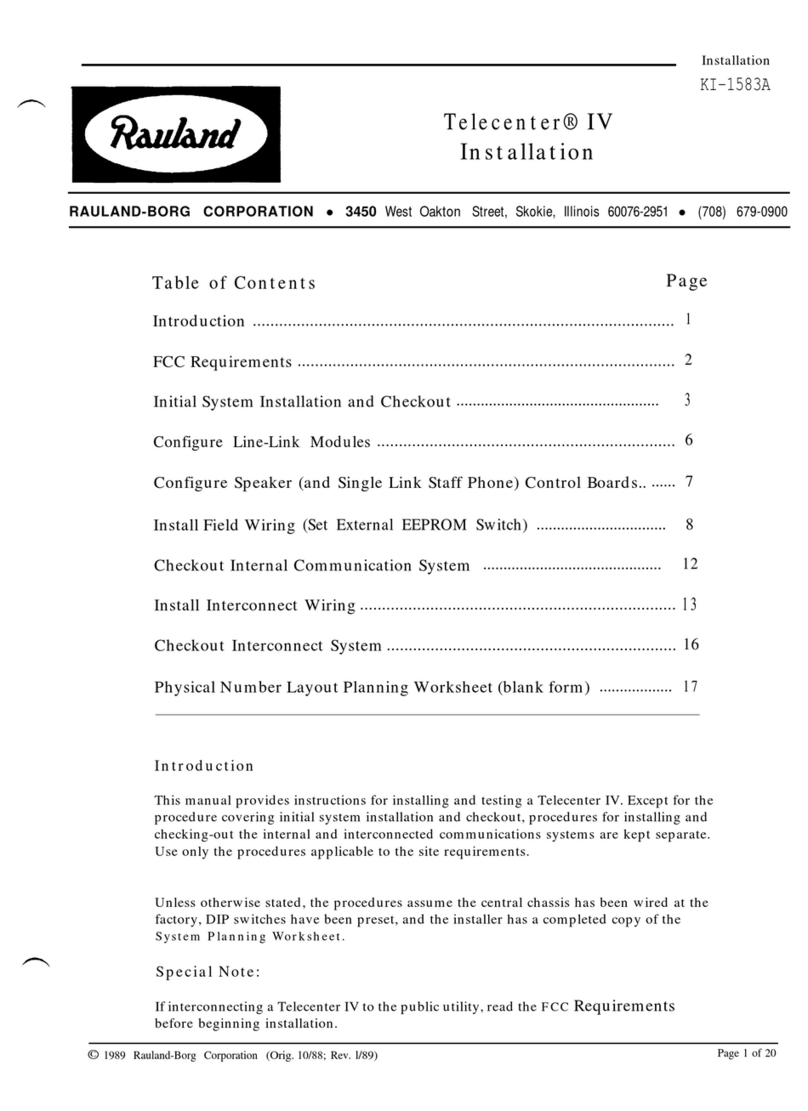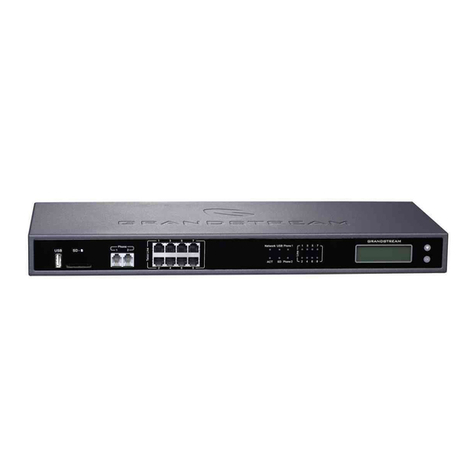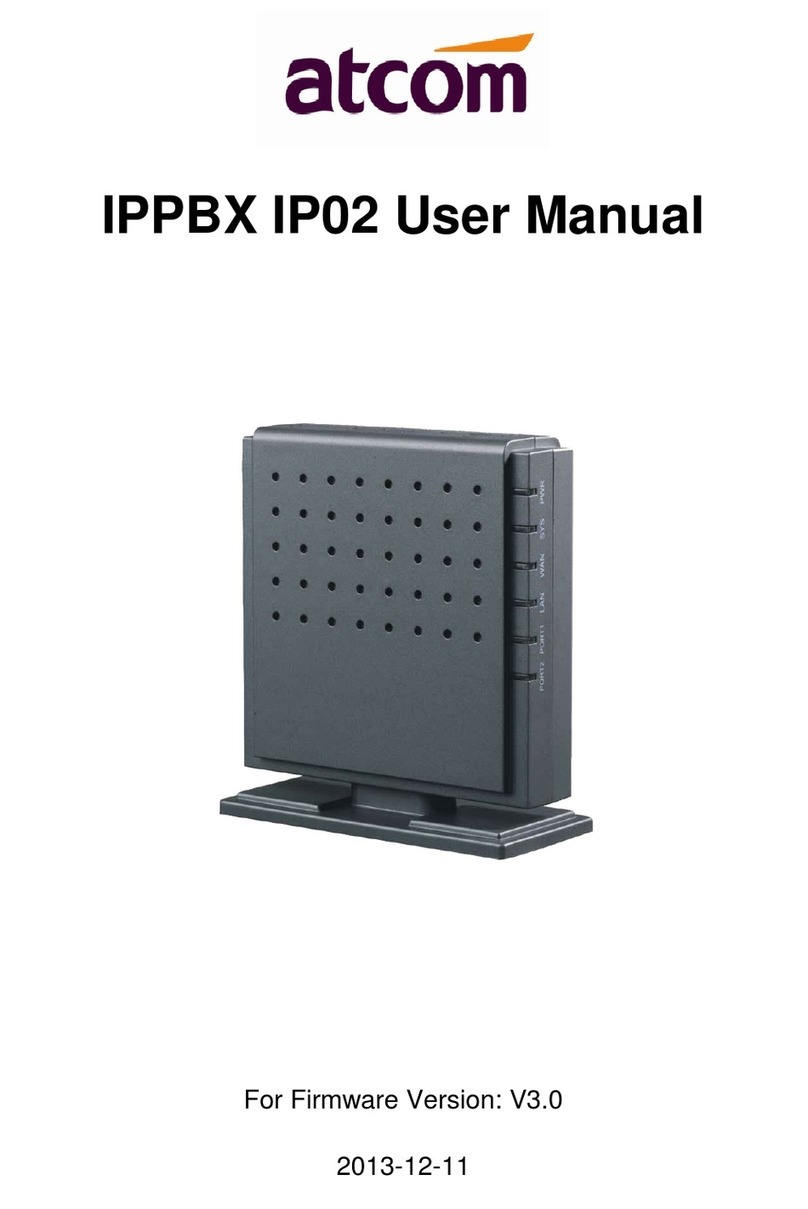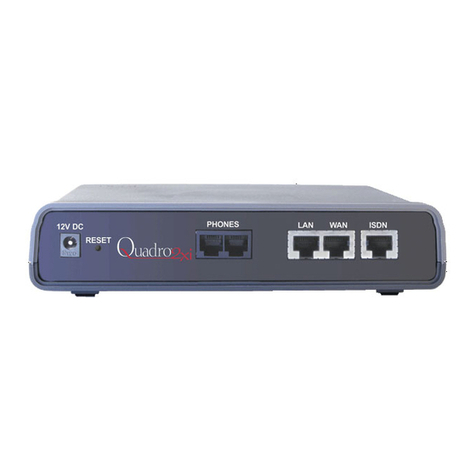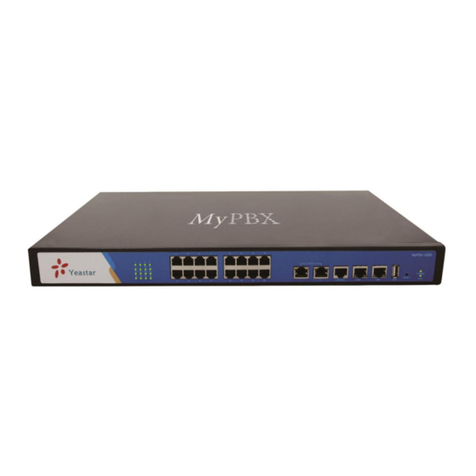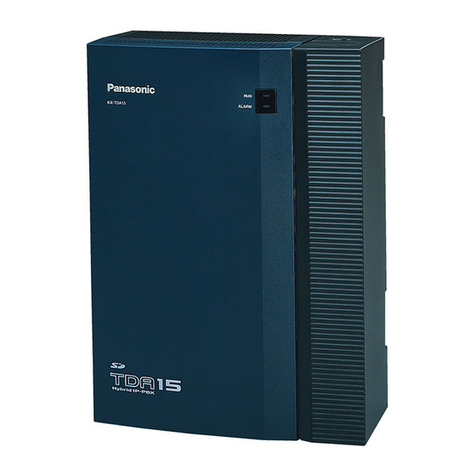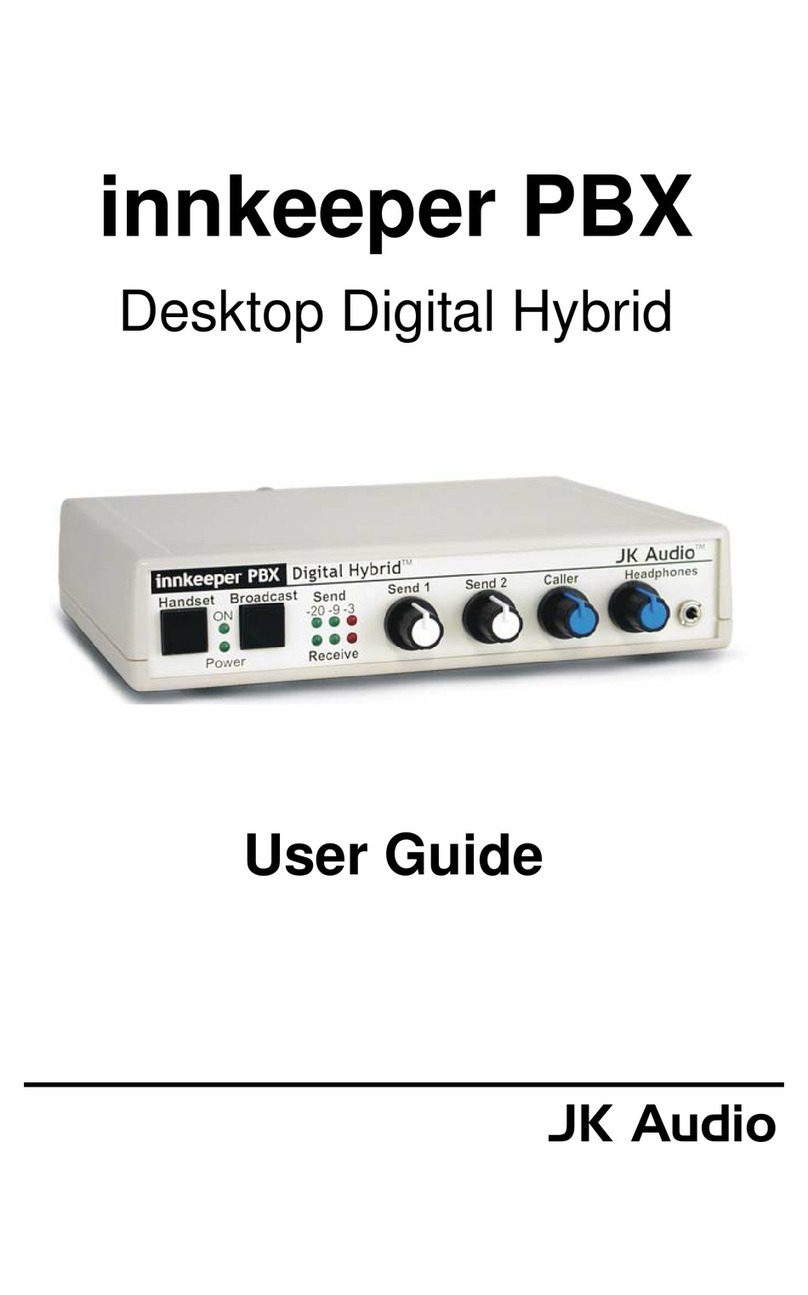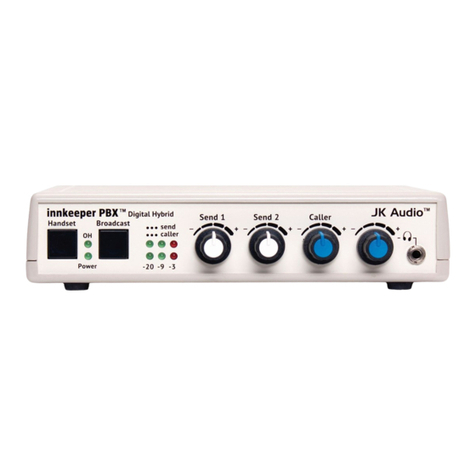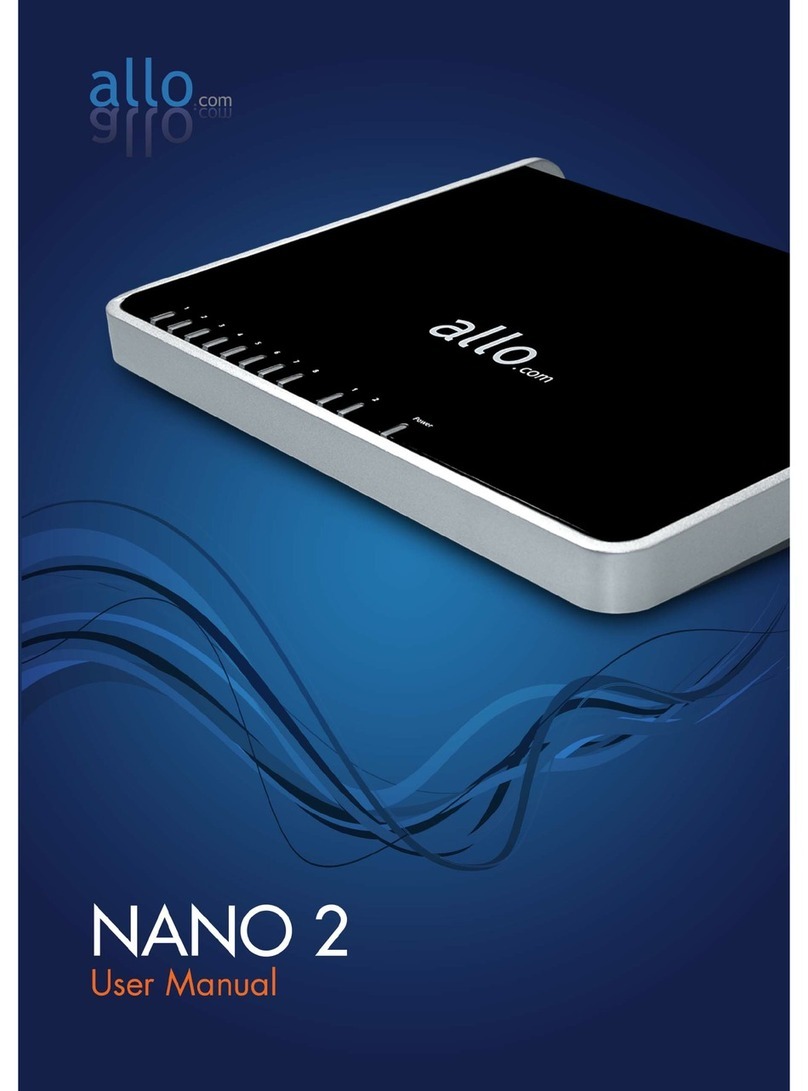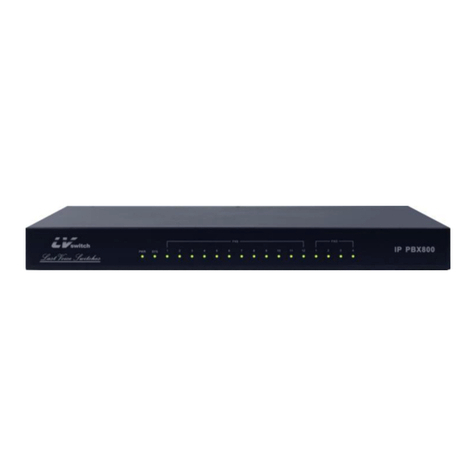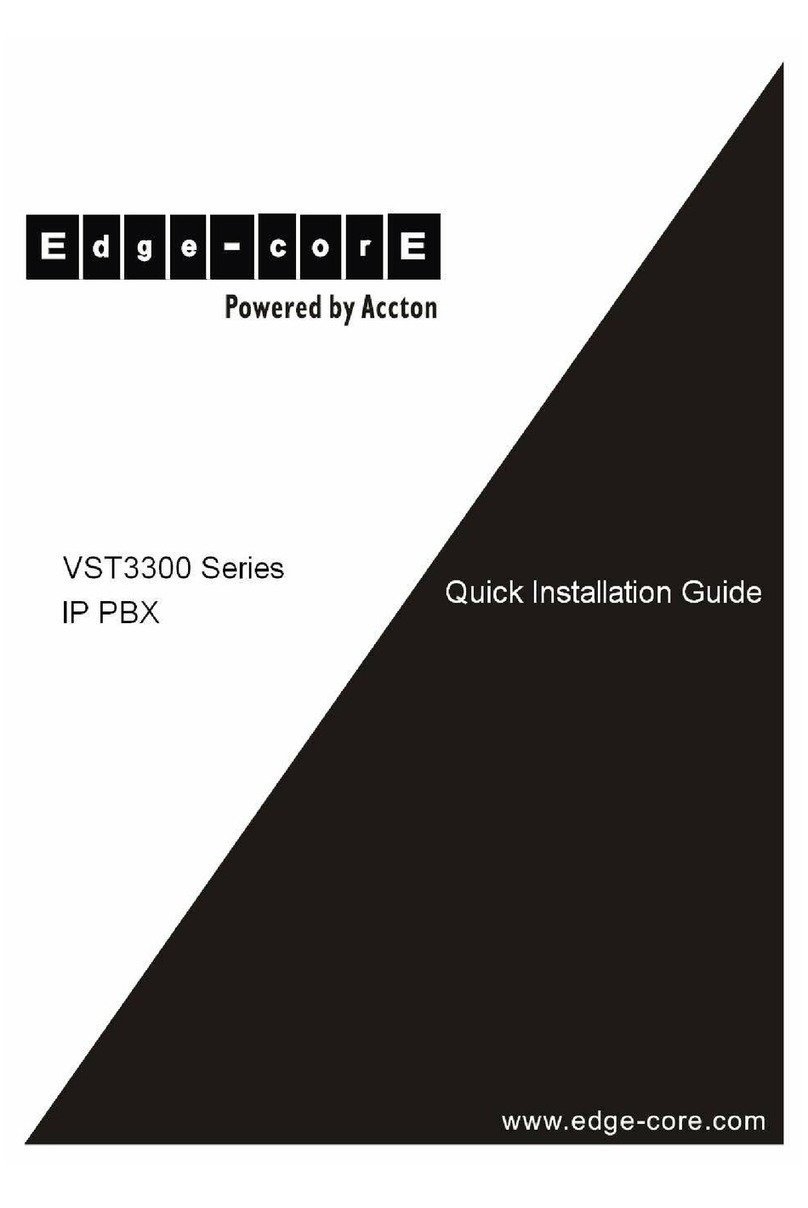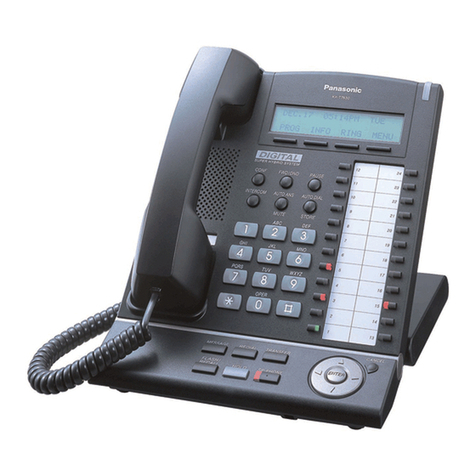8
Operation (continued)
Telephone Handset
Innkeeper PBX will disable the microphone in the telephone hand-
set when you press the Broadcast button. Use your telephone to
place or screen a call. When you are ready to take the call on inn-
keeper PBX, simply press the Broadcast button. Innkeeper PBX
will automatically release the Hold (if Hold is used). Make sure
you do not put the telephone handset back in it's cradle while
you are on a call. This will still drop the call. Do not disconnect
or remove the handset during your call as this will change the
input impedance from the phone line and change the audio level.
If you need to take the call back on your telephone, press the
Handset button on innkeeper PBX. This will disable the inputs and
outputs on innkeeper PBX and connect your handset back to the
telephone. Your telephone will operate as a normal telephone any-
time you are in Handset mode. Leaving the hybrid connected to the
handset jack on your telephone will not affect normal use of your
telephone. Audio will only pass through the hybrid when you press
the Broadcast button.
Optional Jumper Settings
There is a jumper located inside the innkeeper PBX at J9 that af-
fects handset operation. The factory default closed position
(jumper covering both pins) disables only the handset microphone
when the Broadcast button is pressed. Changing the jumper to the
open position (either remove the jumper or cover just one pin) al-
lows you to completely disable both the handset microphone and
speaker when the Broadcast button is pressed.
If the incoming audio level from your telephone is too high and you
are consistently lighting the red –3dB Receive LED, first try de-
creasing the volume using the controls on the base of your tele-
phone. If you still cannot drop the incoming audio level enough,
and your unit was purchased after February 2007, you may need
to change jumper J10 inside innkeeper PBX. There are three pos-
sible settings to adjust Caller receive level:
Pins 1 & 2 closed = 0dB (factory default)
Pins 2 & 3 closed = -6dB
Pins 1-3 left open = -12dB
To change the jumper settings, first disconnect power from the inn-
keeper PBX, then remove the cover and locate the appropriate
jumpers on the printed circuit board. 9
Operation (continued)
Send Signal Level
The Send LEDs display the signal level as it goes out to the phone
line. The goal is to drive the phone line at high enough levels to
avoid phone line noise, but not so loud as to cause excessive clip-
ping. Adjust the Send level control so that you rarely see flashes of
the red -3dB peak Send LED. These flashes should occur only dur-
ing loud speech bursts. If the red LED stays lit for extended periods
you can assume that much of your speech is being clipped or dis-
torted. In this case you should decrease the Send volume control
for the input that is causing the clipping.
Caller Signal Level
The Receive LEDs only display the strength of the signal coming in
from the phone line just after the DSP. The Caller level control
does not change what you see on these LEDs. Adjust the Caller
level for the best signal at the output jacks of innkeeper PBX.
A-B-C Selector Switch
Use this switch to select the correct type of handset microphone
your telephone uses. A=Electret, B=Carbon, C=Dynamic. Trial and
error seems to work best in determining which handset type to use.
Your innkeeper PBX will only function correctly if the handset type
selector switch is in the correct position. This switch changes sig-
nal level, impedance, and wiring to accommodate the differences
in handset microphone types. To determine the correct position,
you should place a call to another telephone line, then try to send
audio to the phone line through the input jack of the innkeeper
PBX . While doing this, switch between the three different handset
type positions. Choose the position that works best by monitoring
the audio quality and Send LEDs.
Although not conclusive, the following guidelines may help:
The majority of newer telephones have electret type microphones
and will use the "A" position.
Older telephones that have the round "screw type" handsets con-
tain carbon microphones and use the "B" position.
Many Radio Shack®, Panasonic®, and Nortel®telephones have
dynamic microphone types and use the "C" position.
